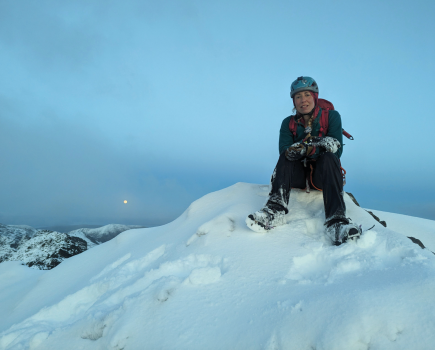Last year, Nicola Hardy took a 200-mile personal pilgrimage across three of England’s national parks. Here are 10 of her highlights from the journey.
This advertising feature is sponsored by our friends at komoot, the app that lets you find, plan, and share adventures with the easy route planner. Driven by a desire to explore, and powered by the outdoor community’s recommendations, it’s komoot’s mission to inspire great adventures making them accessible to all.
One of the most rewarding things about any long-distance walk is the way you uncover gems along the way: fascinating landmarks, natural wonders, expansive viewpoints and hidden surprises.
Last year, instead of travelling abroad, Nicola Hardy had an adventure closer to home, and with a more personal meaning. She decide to walk across the north of England, from her Sheffield birthplace to her new home in Cumbria – a 200 mile (325 kilometre) ‘personal pilgrimage’ that took more than two weeks.
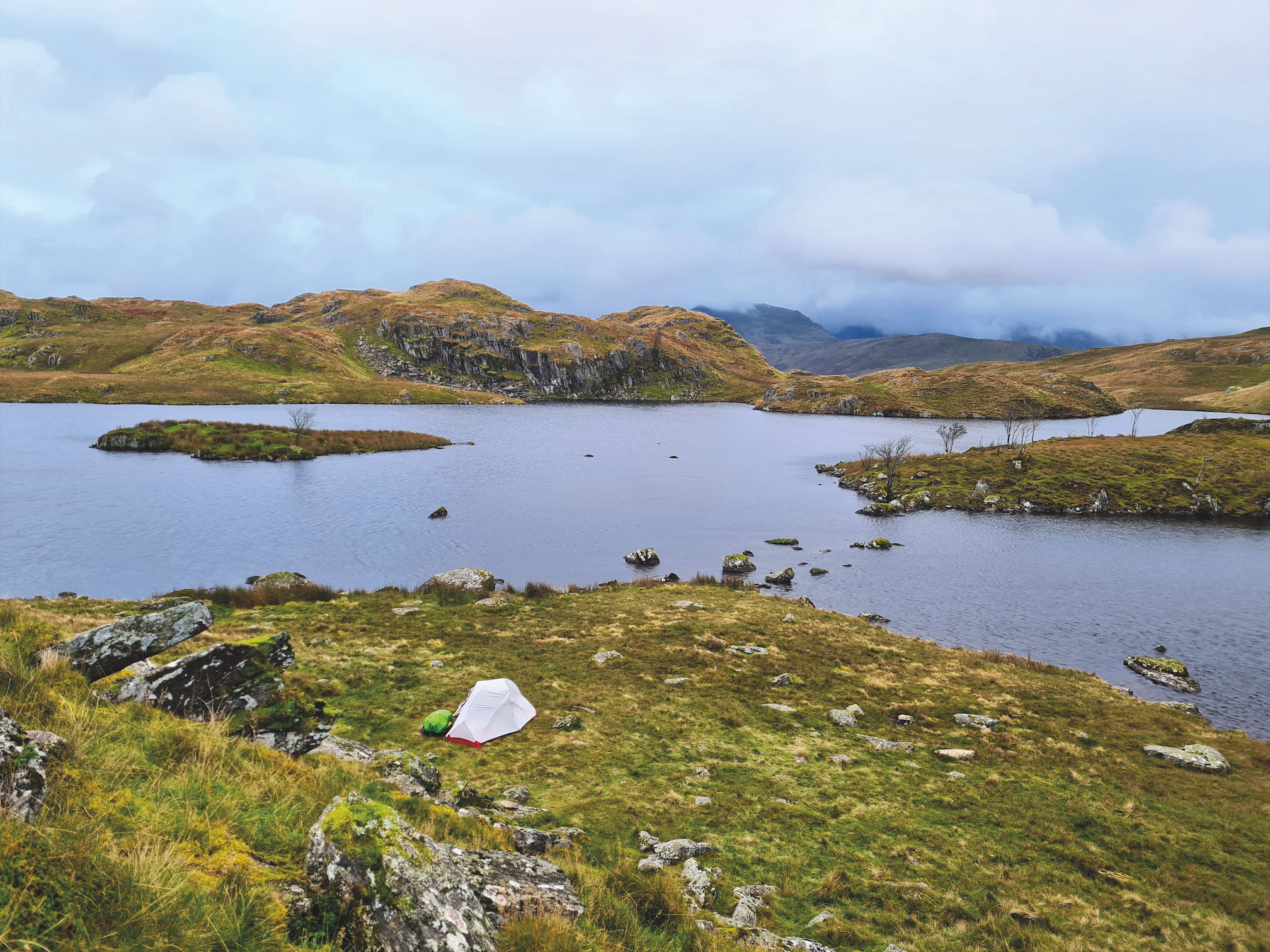
A wild camp in the Lake District on day 12 of the journey. Photo: Nicola Hardy
Here she rounds up 10 of the most impressive, unusual or memorable places she passed on the way. All of these are marked as ‘Highlights’ on komoot, which lets you find, plan and share adventures by tapping into community knowledge and recommendations – then bring your journey to life with the app’s easy route planner.
Check out all these highlights in the route collection map on komoot below.
1. Jacob’s Ladder, Peak District
In the Bible Jacob’s Ladder leads to heaven, but in the Peak District it’s an ancient track with steeply cut steps – built by local farmer Jacob Marshall in the 18th Century –
that leads to the Kinder Scout plateau.
It’s a popular route offering views to the hamlet of Upper Booth and across the Edale valley. Once atop the plateau, you’re treated to some of the Peak District’s true highlights: strangely sculpted rocks, a lofty gritstone escarpment and the Kinder Downfall waterfall.
2. Stoodley Pike, South Pennines

Approaching Stoodley Pike on day five of the journey. Photo: Nicola Hardy
This 402m grassy hill, located along the Pennine Way to the east of Todmorden, would be utterly unremarkable without the dramatic memorial adorning its summit. But crowning the pike is an impressive 121ft stone monument, a needle-like landmark dominating the skyline above the upper Calder Valley. It was designed in 1854 to replace an earlier lightning-damaged plinth commemorating the defeat of Napoleon. Reaching Stoodley Pike Monument felt like a real milestone along my journey and I thoroughly enjoyed the views across the surrounding moorland.
3. Top Withens, West Yorkshire
One for the literature buffs, Top Withens is a ruined farmhouse said to have been the inspiration for the location of the Earnshaw family house Wuthering Heights in Emily Brontë’s 1847 novel. It is located on the Pennine Way, in the rather desolate hills to the south-west of the village of Haworth. There is a rustic bothy attached to the ruined farmhouse, which provides welcome respite from the windswept uplands. I’d love to go back and sleep there one day.
Check it out on komoot
4. Malham Cove, North Yorkshire

A sunny spring day at Malham Cove. Photo: Shutterstock
Malham Cove is a humongous, curving face of limestone shaped like an amphitheatre. Located to the north of Malham village, its vertical cliffs rise to about 250 feet (75 metres).
Climbers are often seen testing their skills against these sheer rockfaces, while hikers tend to veer west around the cliffs on the Pennine Way. This is the route I took during my walk – and the views from atop the deeply notched limestone pavement, above the cliffs, were some of the best of my entire journey.
5. Pen-y-ghent, Yorkshire Dales
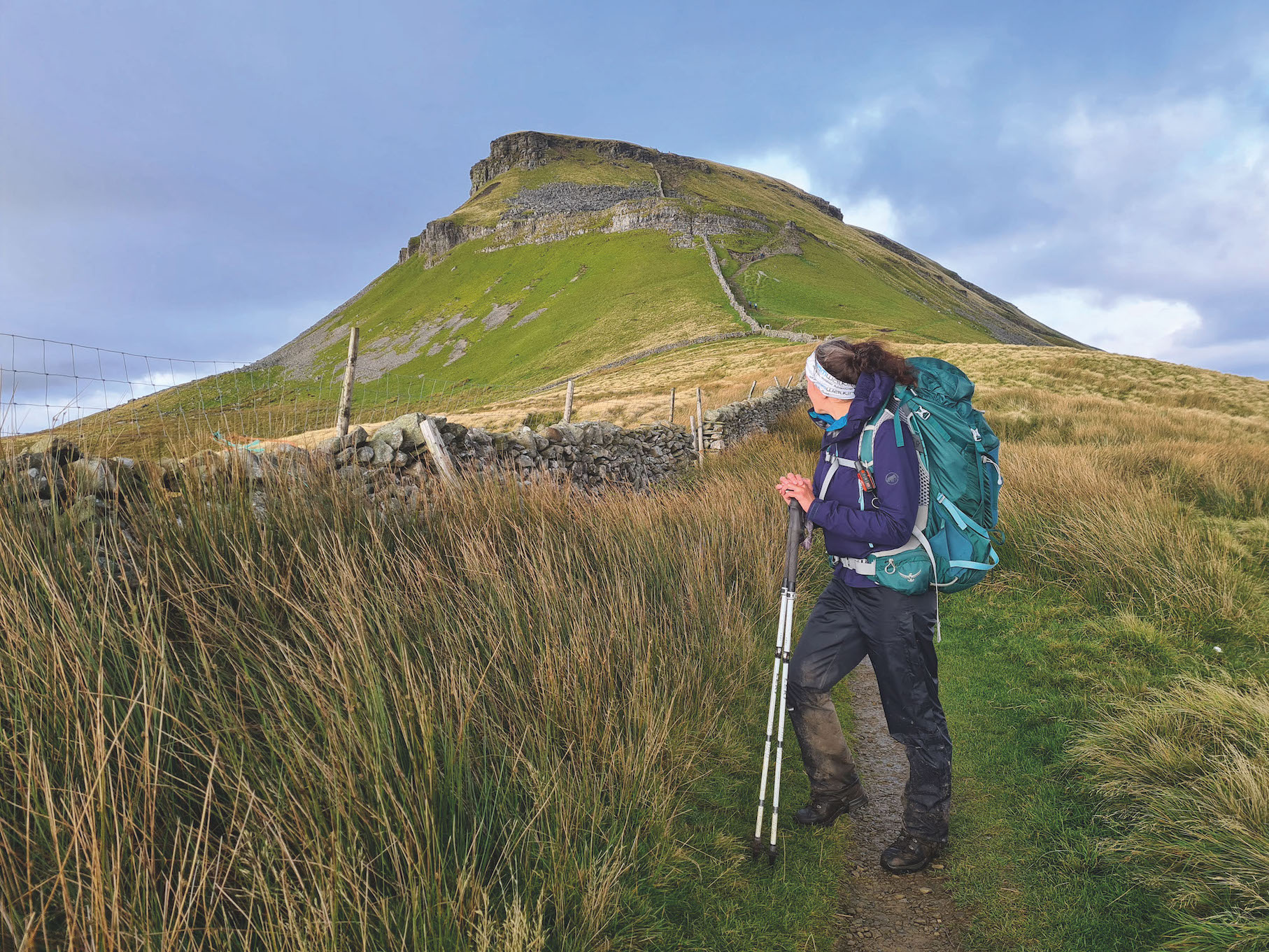
Nicola at the foot of Pen-y-ghent on day eight of her journey. Photo: Nicola Hardy
One third of the famous Yorkshire Three Peaks, Pen-y-ghent is a classic Dales mountain. What it lacks in height (at 694m it’s the shortest of the trio), it more than makes up for in rugged charm. The heavens opened when I climbed it on day eight of my expedition and I was battered by heavy rain and gusting winds – but I didn’t mind. Making it to the summit trig felt like another massive step towards my ultimate goal of walking home.
6. Bowderdale Valley, Howgills
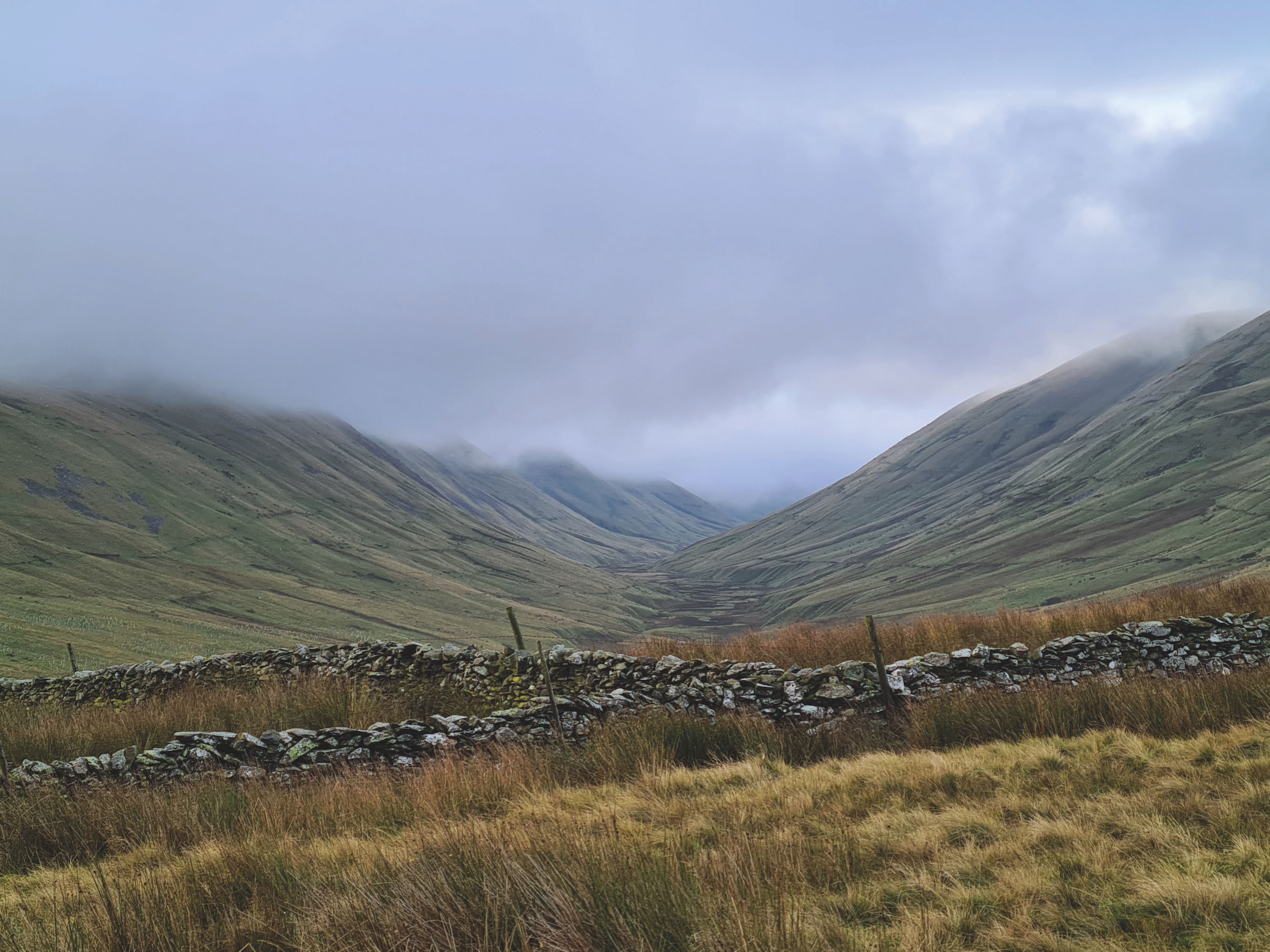
Looking into the Bowderdale Valley in slightly gloomy weather, day 11. Photo: Nicola Hardy
Lost in a no-man’s land between the Lakes and the Dales, part of Cumbria but located within the expanded Yorkshire Dales National Park, these grassy, domed hills above Sedbergh are less frequented than their more famous neighbours. Tranquil
and almost secretive, the Howgills are an ideal choice for a peaceful hillwalk away from the crowds. I wild camped near West Fell, high above the long and lonely Bowderdale Valley – perhaps the remotest night of my adventure.
7. Shap Abbey, Cumbria
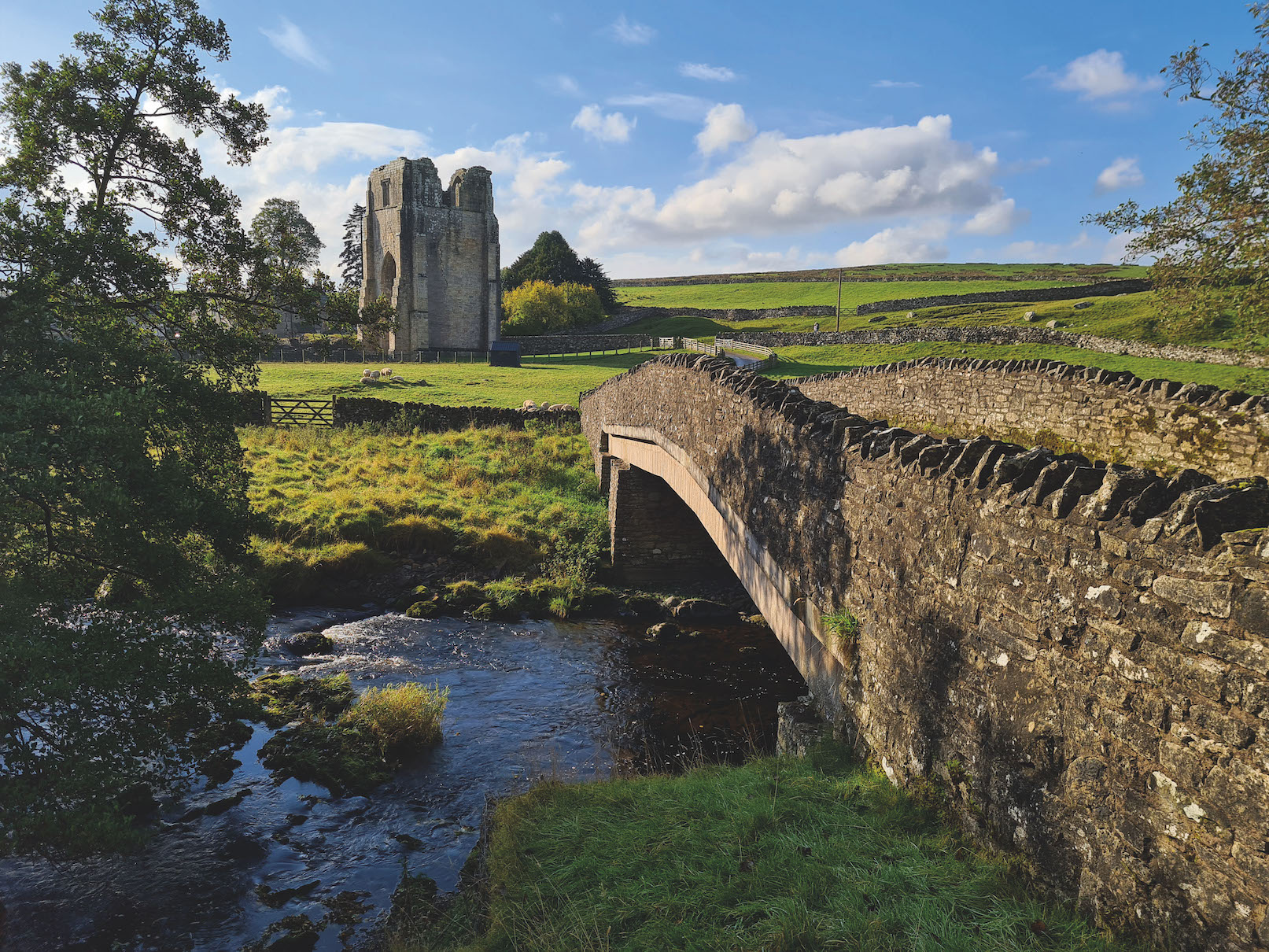
Checking out the abbey on day 12. Photo: Nicola Hardy
Located in the secluded valley of the River Lowther, Shap Abbey was founded in the late 12th Century as one of 32 religious houses belonging to the Premonstratensian order of canons. Under the protection of English Heritage, today you can explore the historic remains for free, and the 15th Century tower is particularly impressive. But, for me, Shap Abbey represented something more poignant. It felt like the exact point I was entering the Lake District for the final leg
of my journey.
8. Flock In Tea Room, Rosthwaite, Lake District

Time for treats on day 14. Photo: Nicola Hardy
Homemade cakes, fresh scones with jam and cream, steaming bowls of soup, mugs of hot chocolate or scrumptious ice cream cones – whatever mid-hike treats you desire, the delightfully quaint Flock In Tea Room can accommodate. Nestled next to a bustling sheep farm in the heart of Borrowdale, the setting can accurately be described as idyllic too – a romantic land of soaring fells and blankets of oak and birch. On my penultimate day I stopped here for some mouth-watering cheesy crumpets – yum!
9. Hopegill Head, Lake District
Often ticked off as part of the popular Coledale Horseshoe, most hillwalkers don’t think much of Hopegill Head – it never appears in lists of the best Wainwrights. But, for me, it’s massively under-rated. From the north it is a handsome and dramatic peak, flanked by a massive crag and dissected by a shapely ridge crescendoing to a pointy, rocky summit. I found scrambling down the wet slabs of this summit rather petrifying, but completing it safely gave me a dizzying high.
10. Stanger Spa, Cumbria
This seldom-walked final leg of my adventure – a riverside stroll from Lorton village to Cockermouth along the snaking River Cocker – was a real surprise. Views across the Vale of Lorton towards Buttermere and towering Grasmoor gave a sense of walking away from the mountains, while the river itself was a calming influence. In the middle of nowhere, I also stumbled across Stanger Spa, a former saline holy well from which a doctor sold ‘curative water’ in the 1800s – a quirky find.







